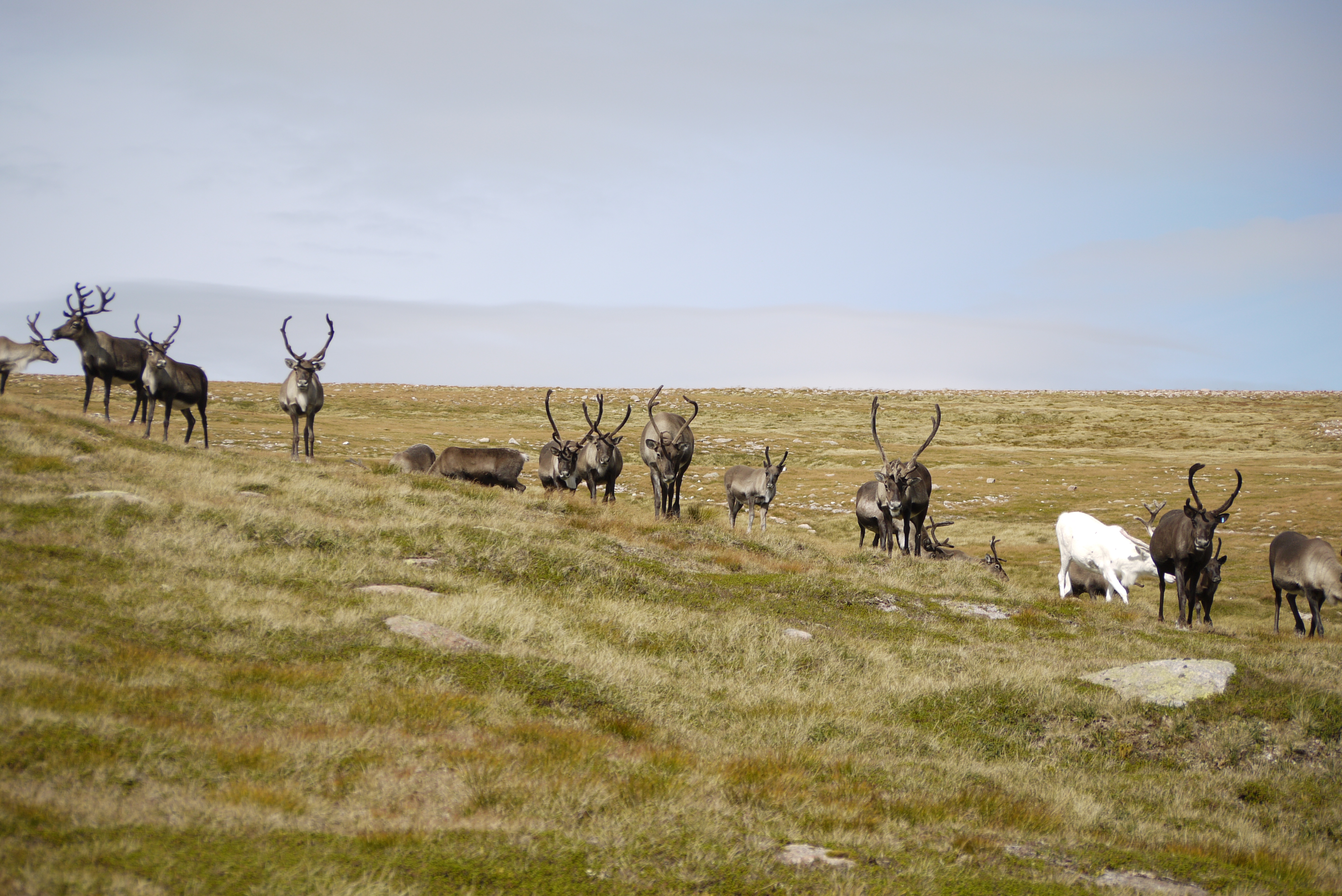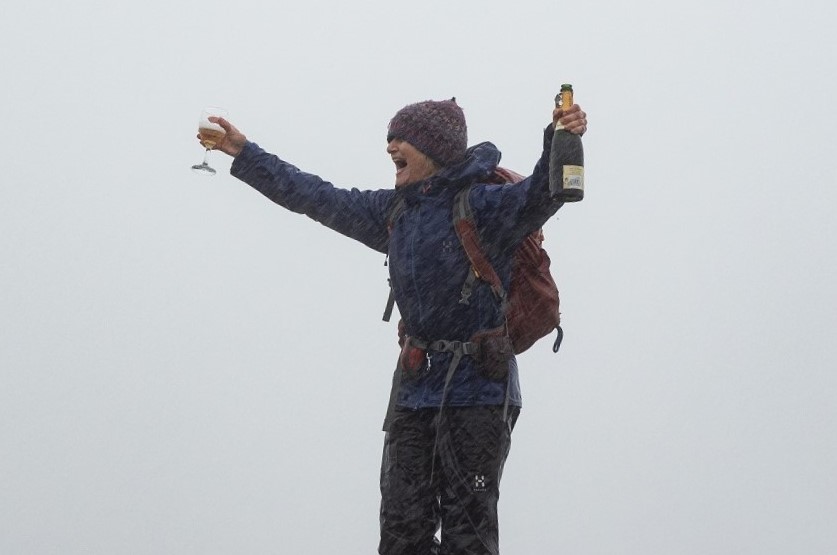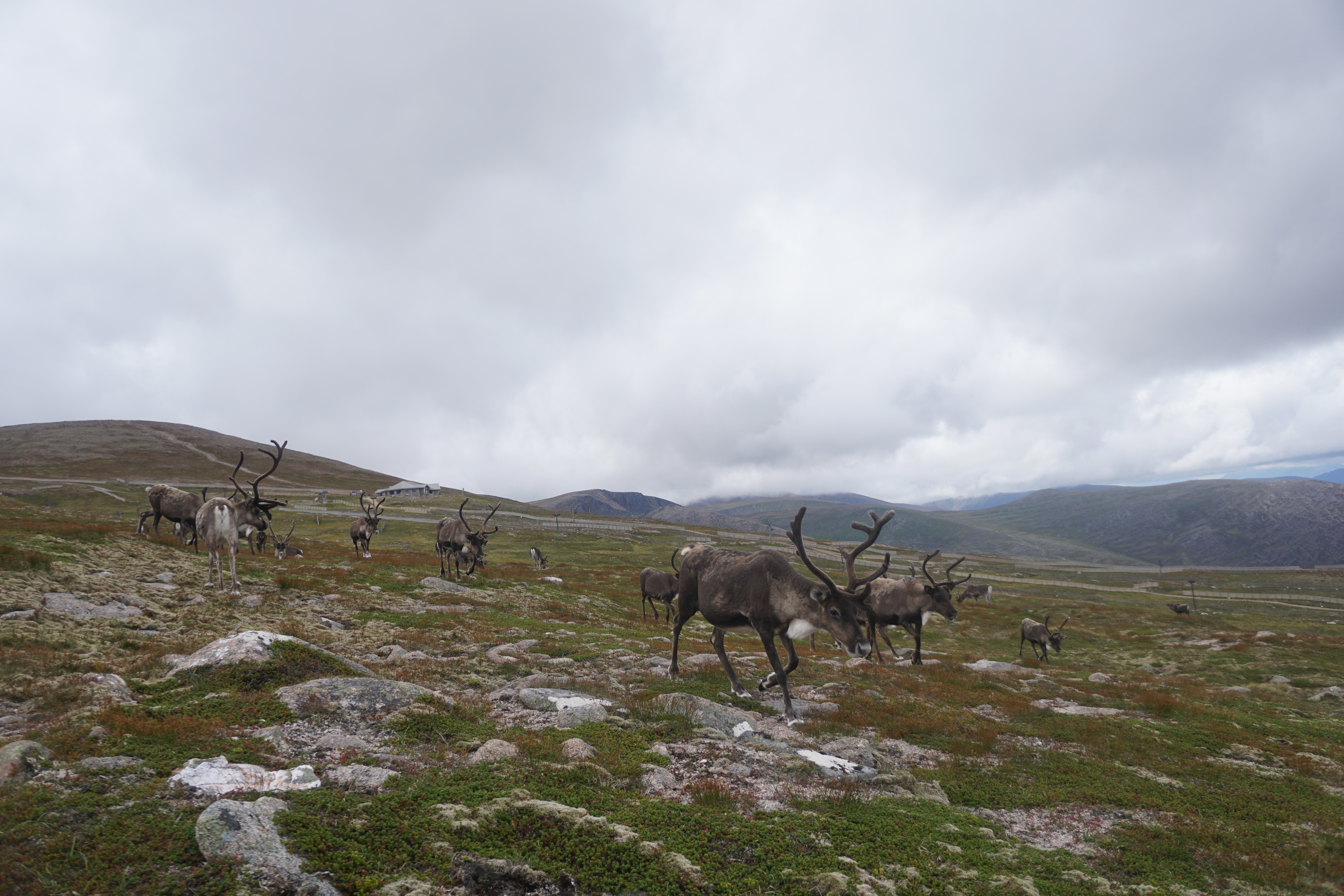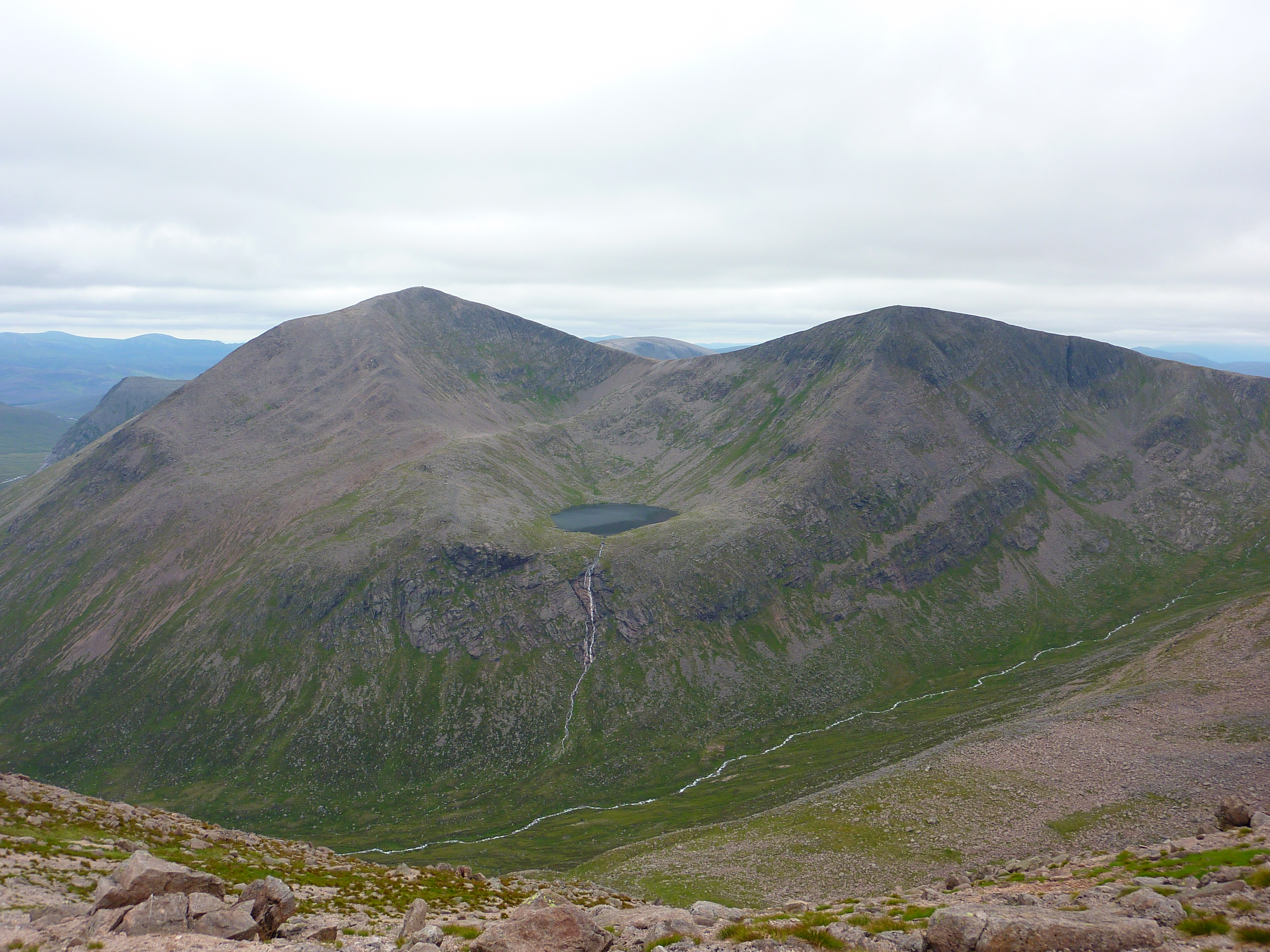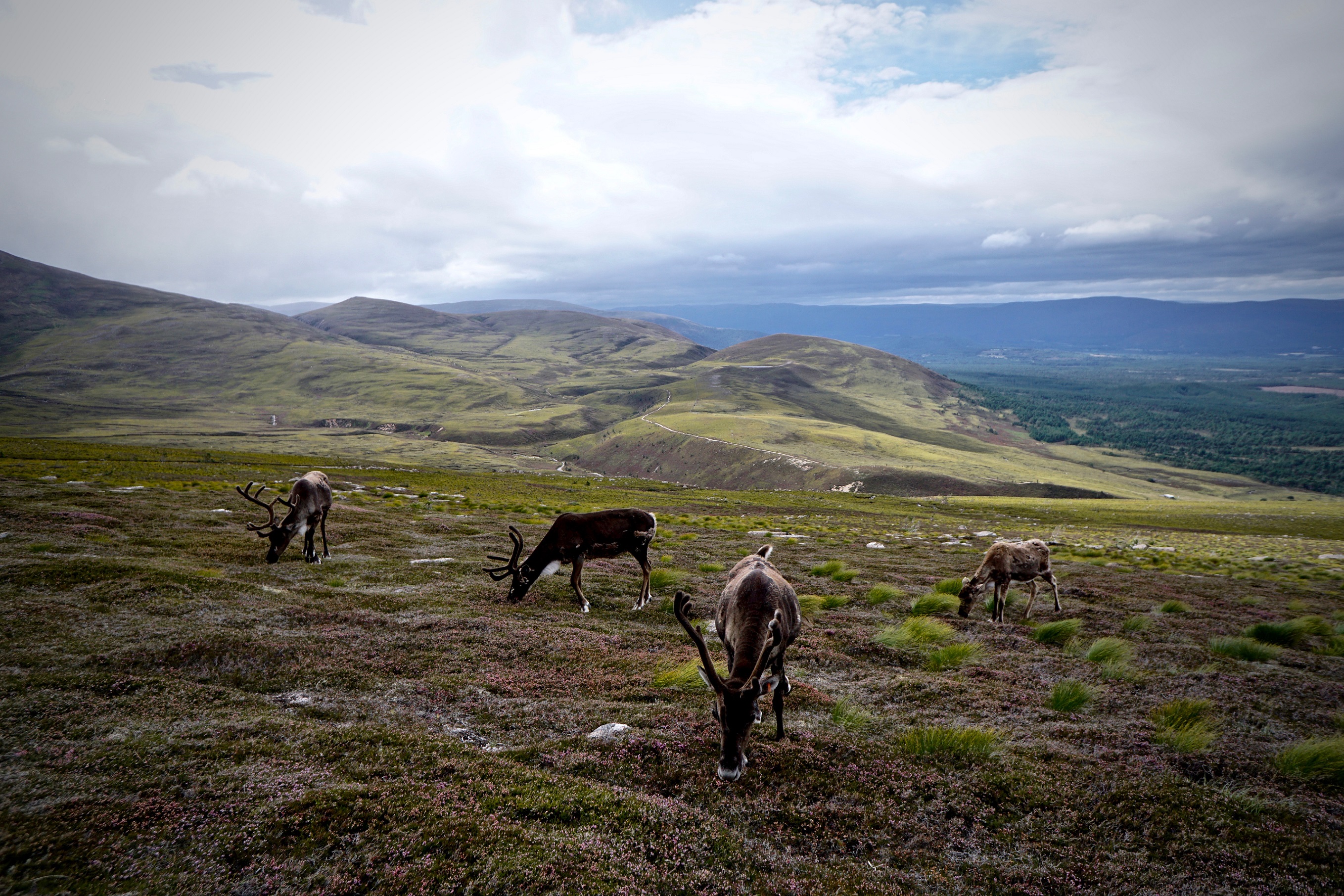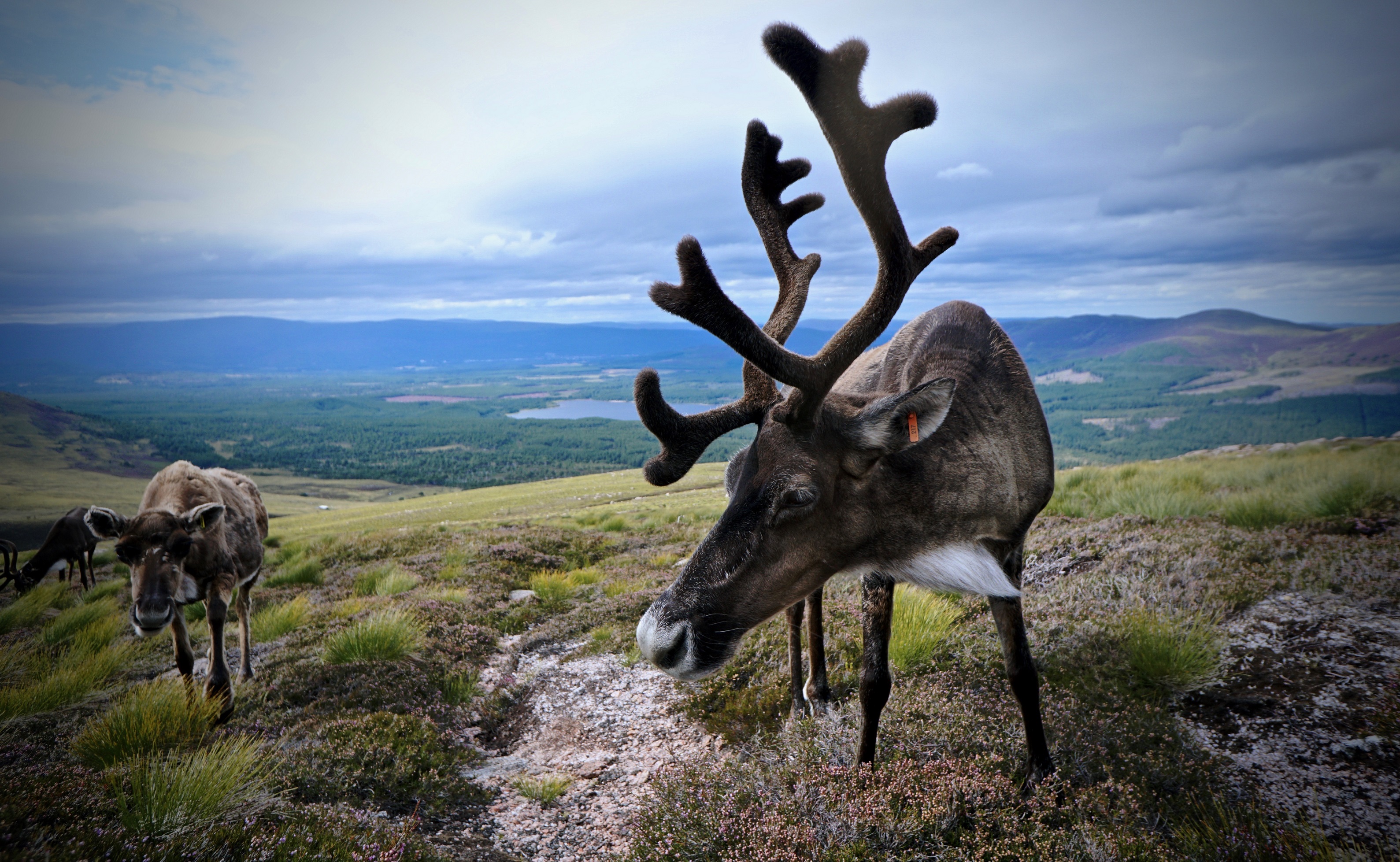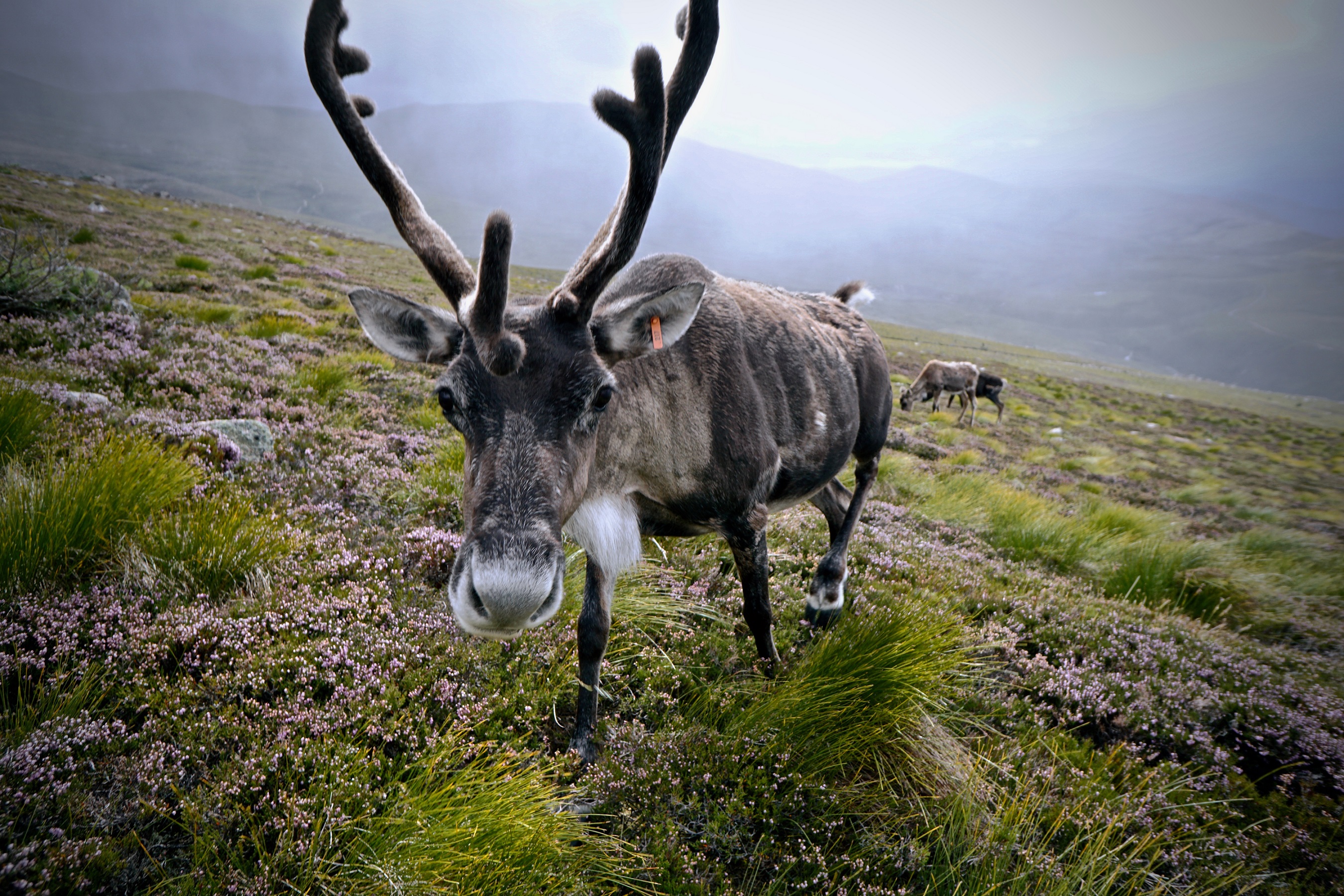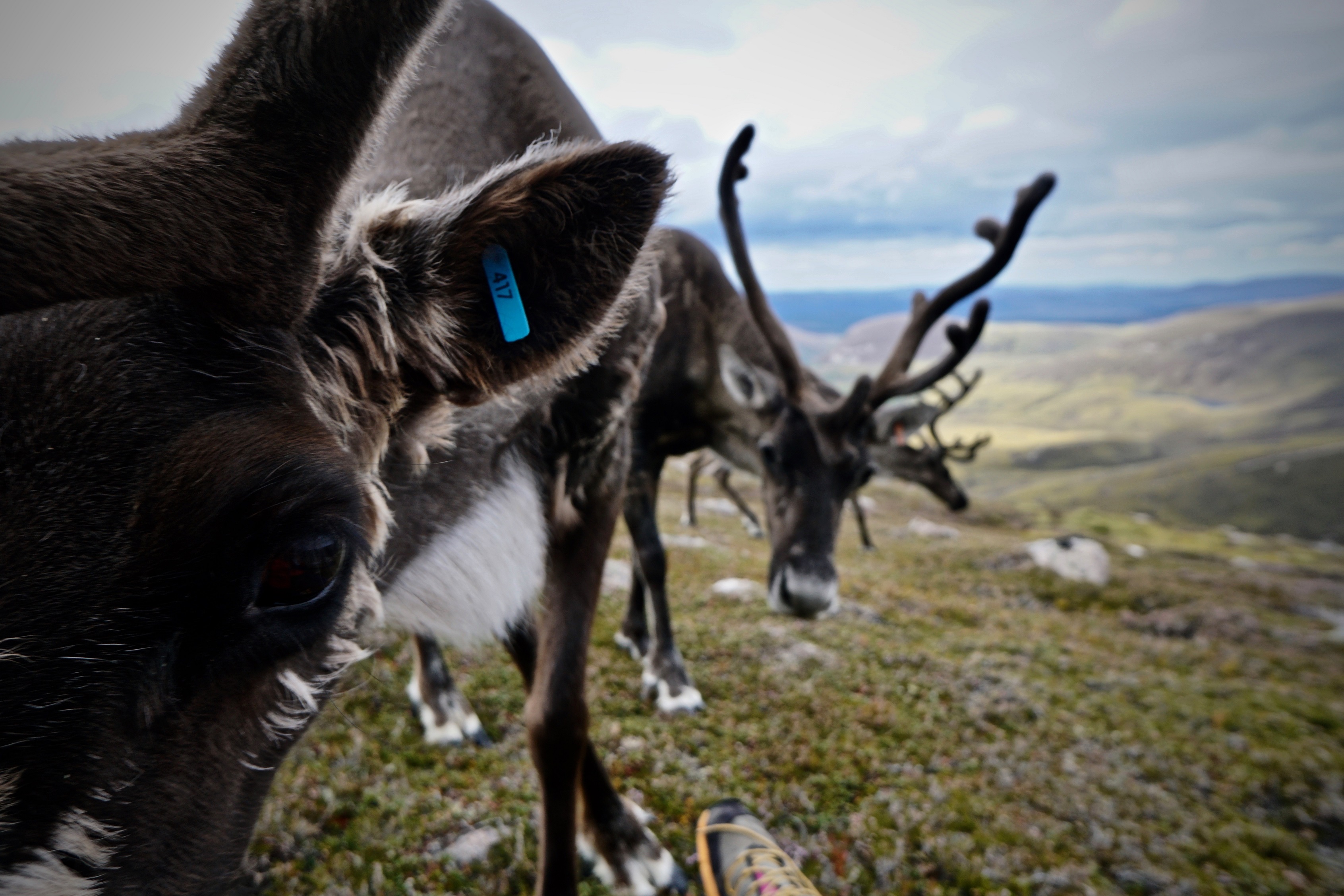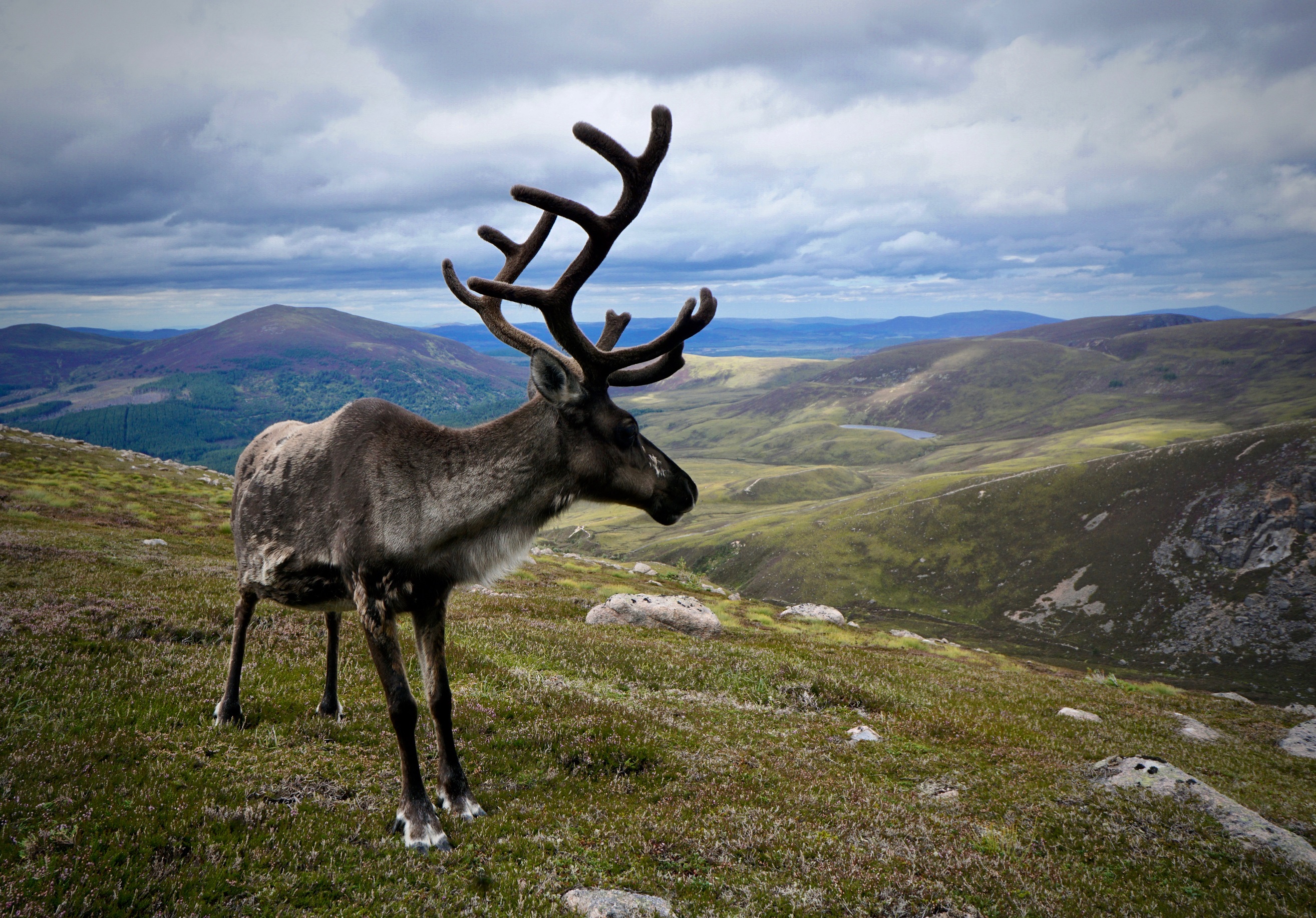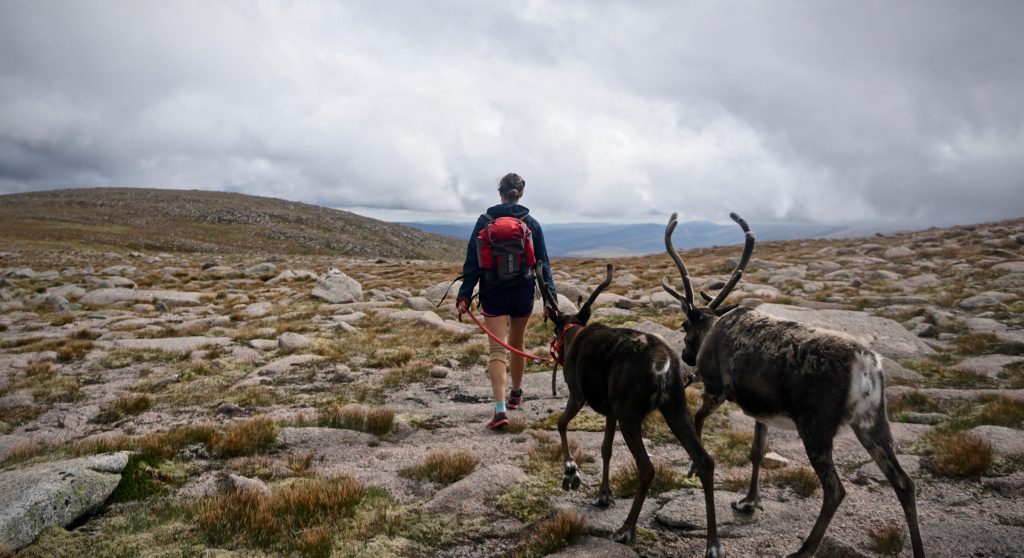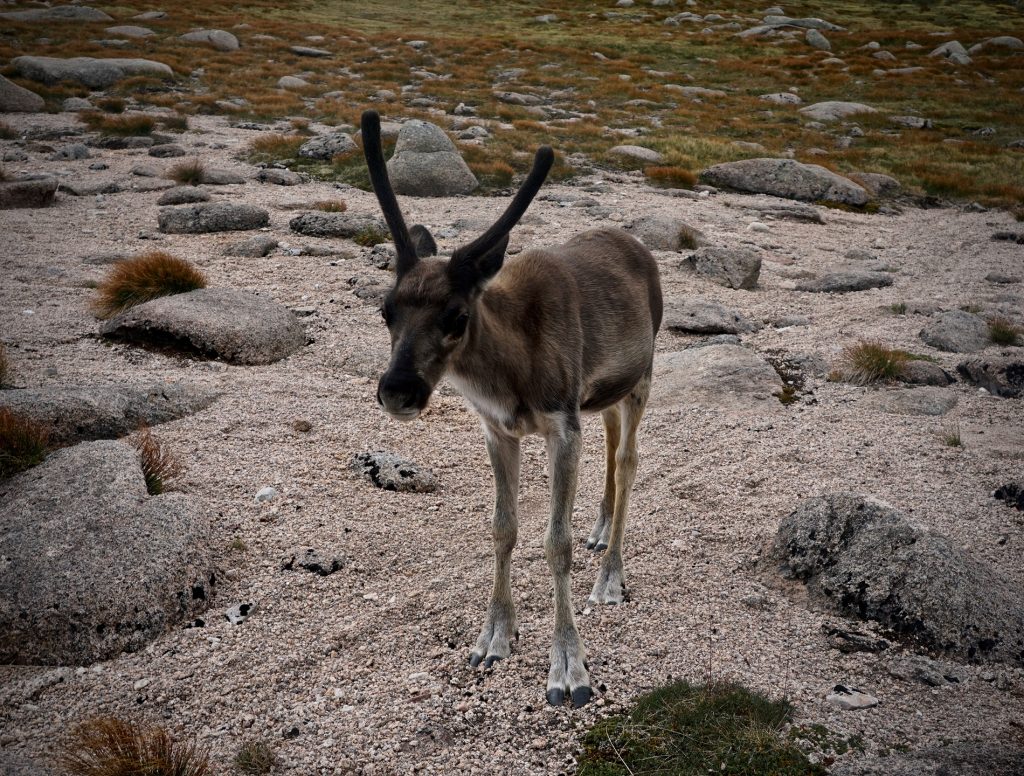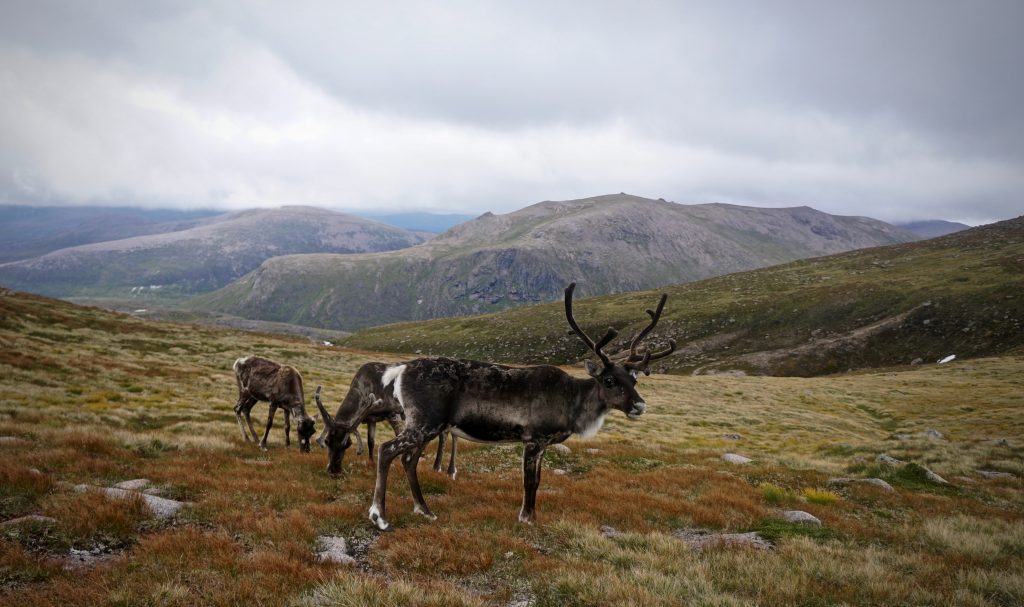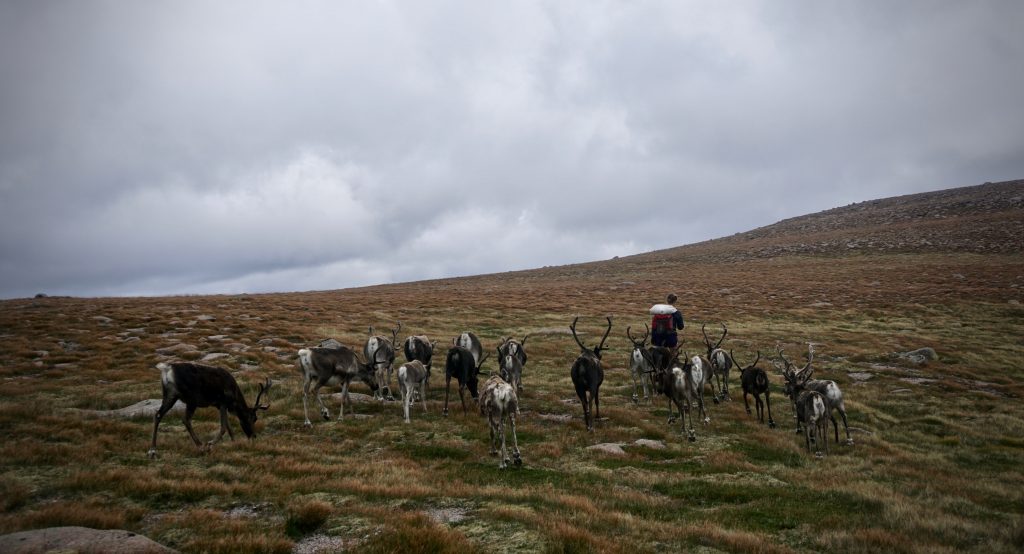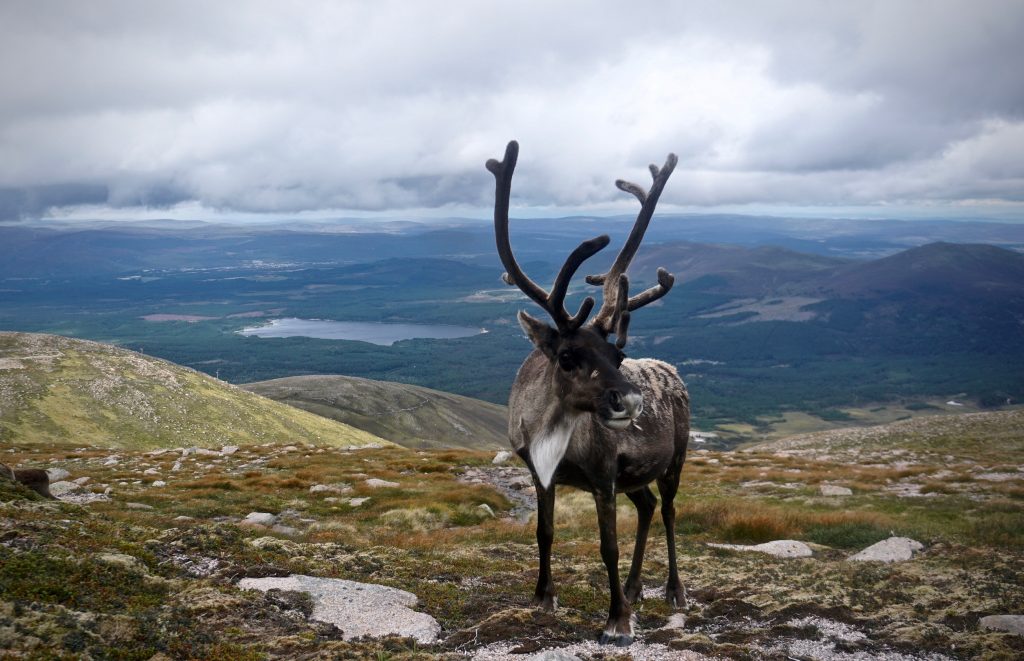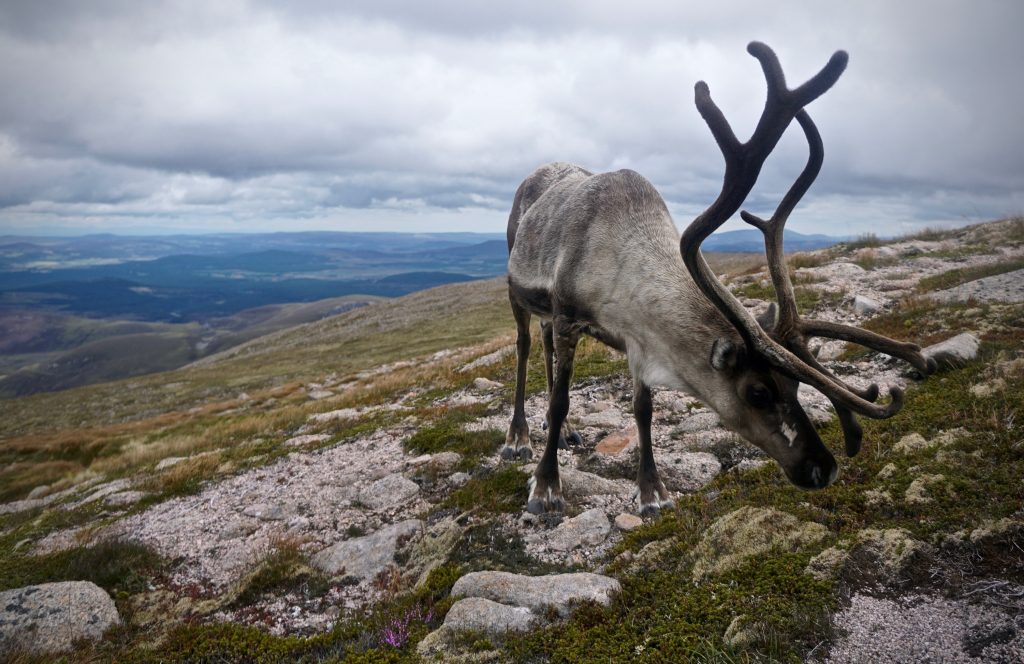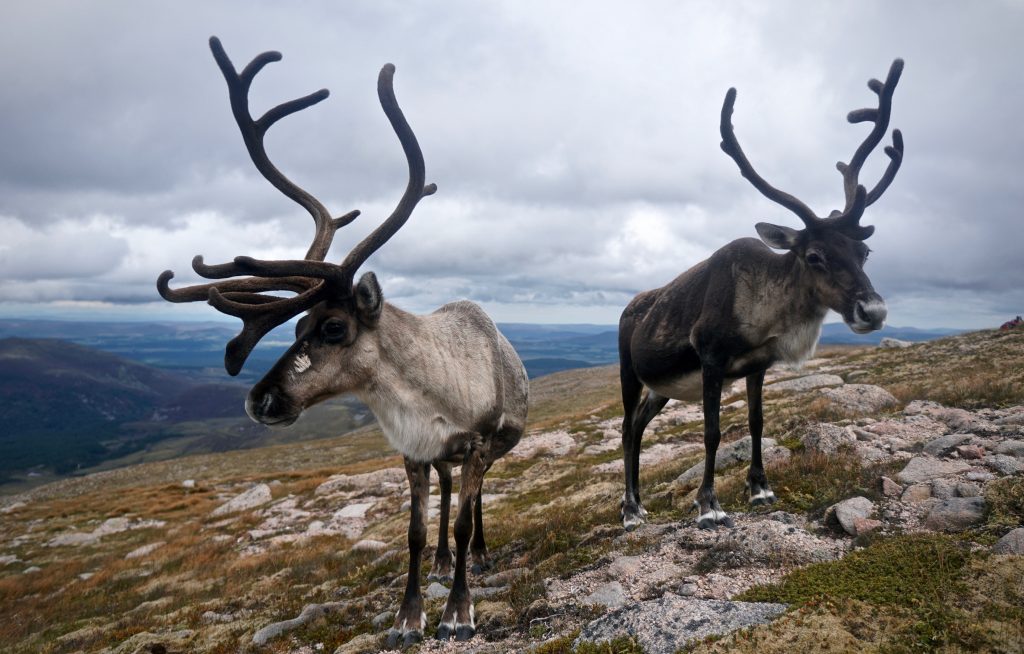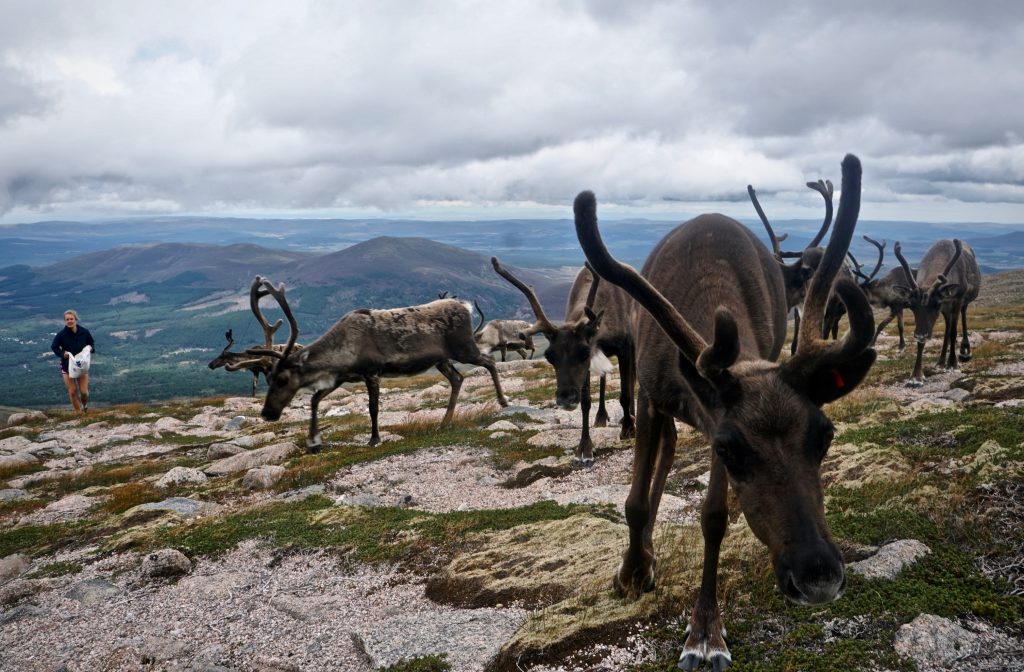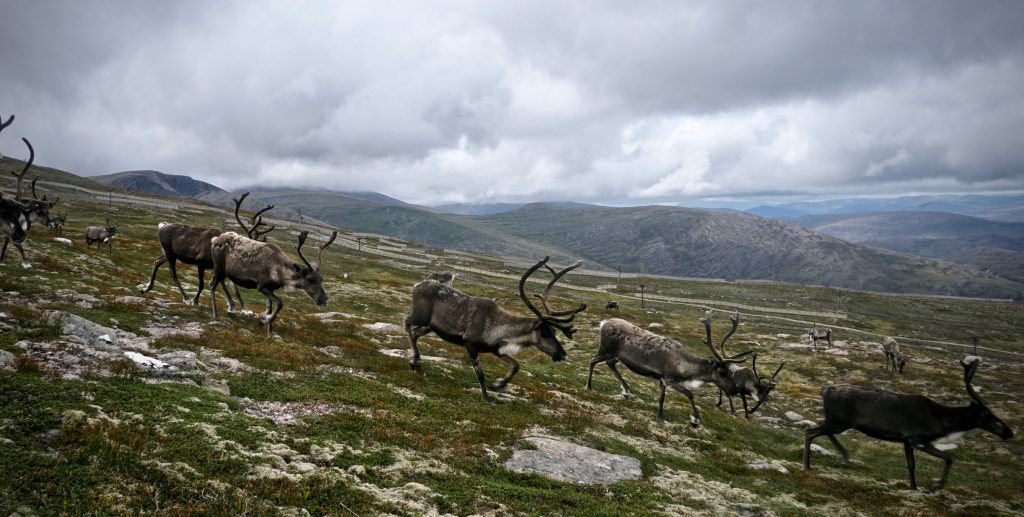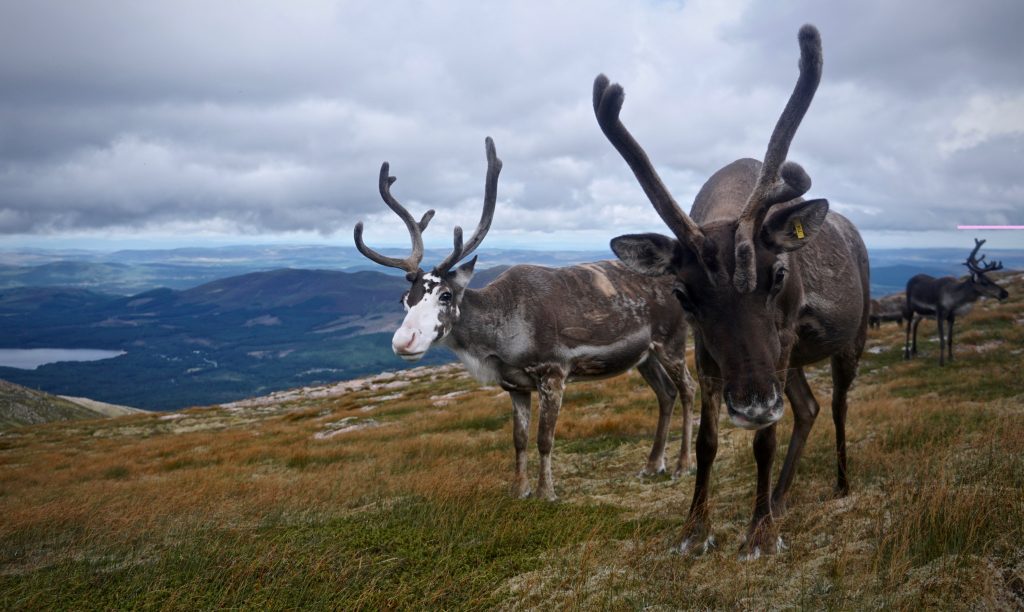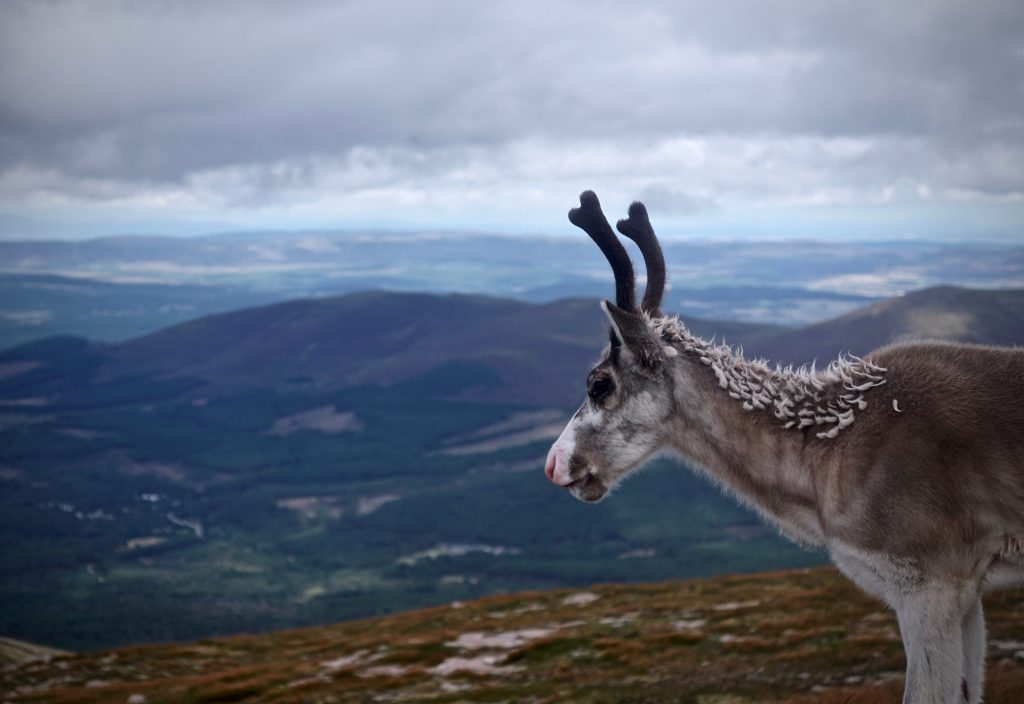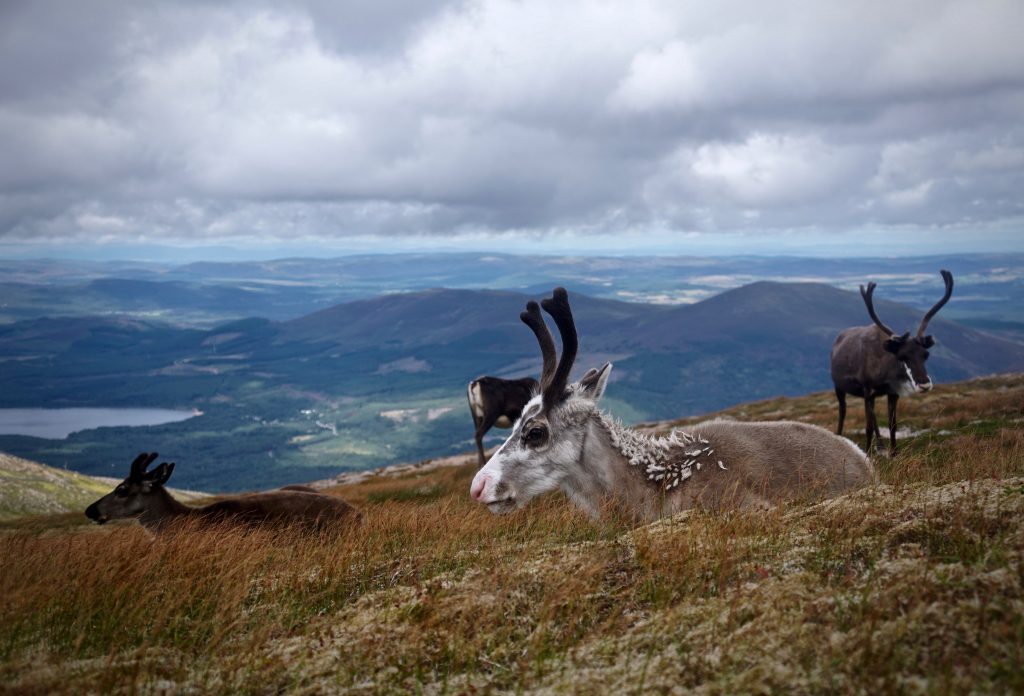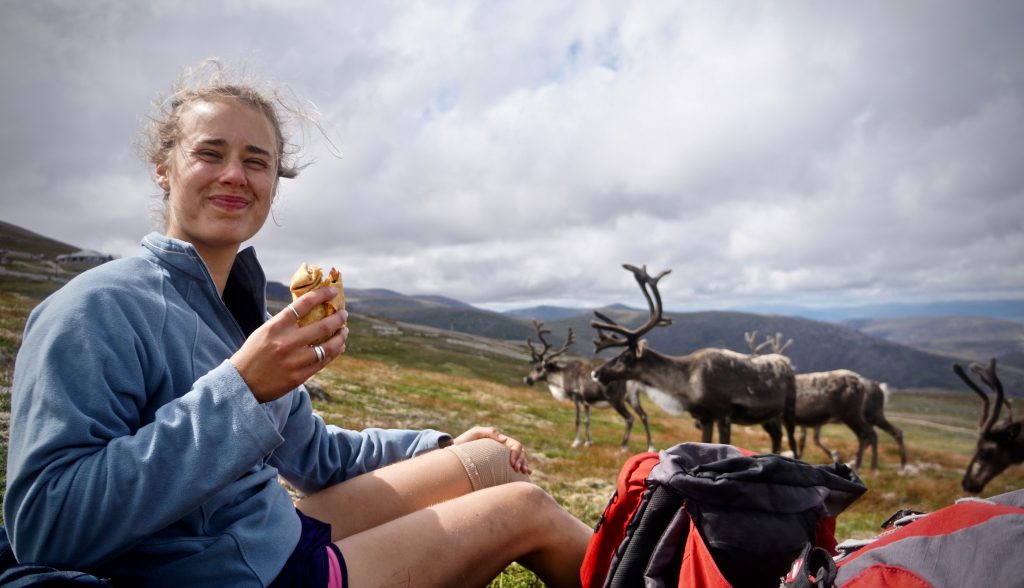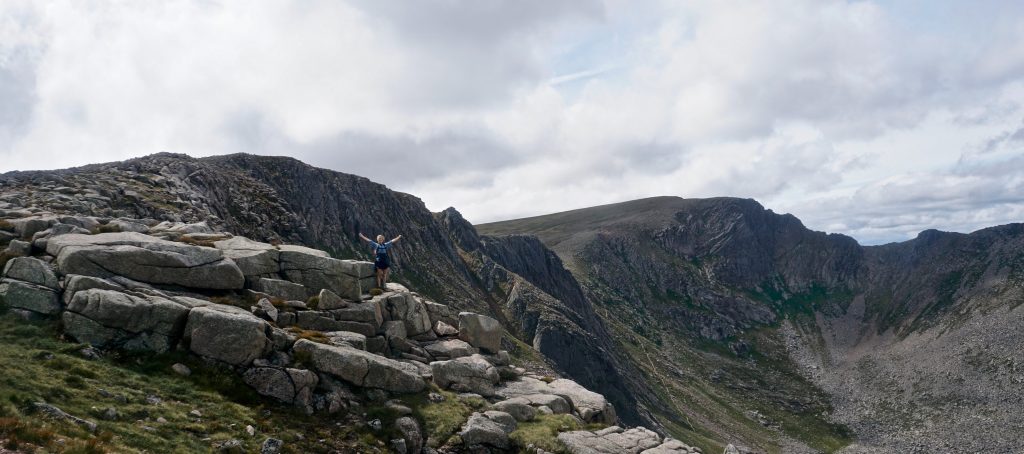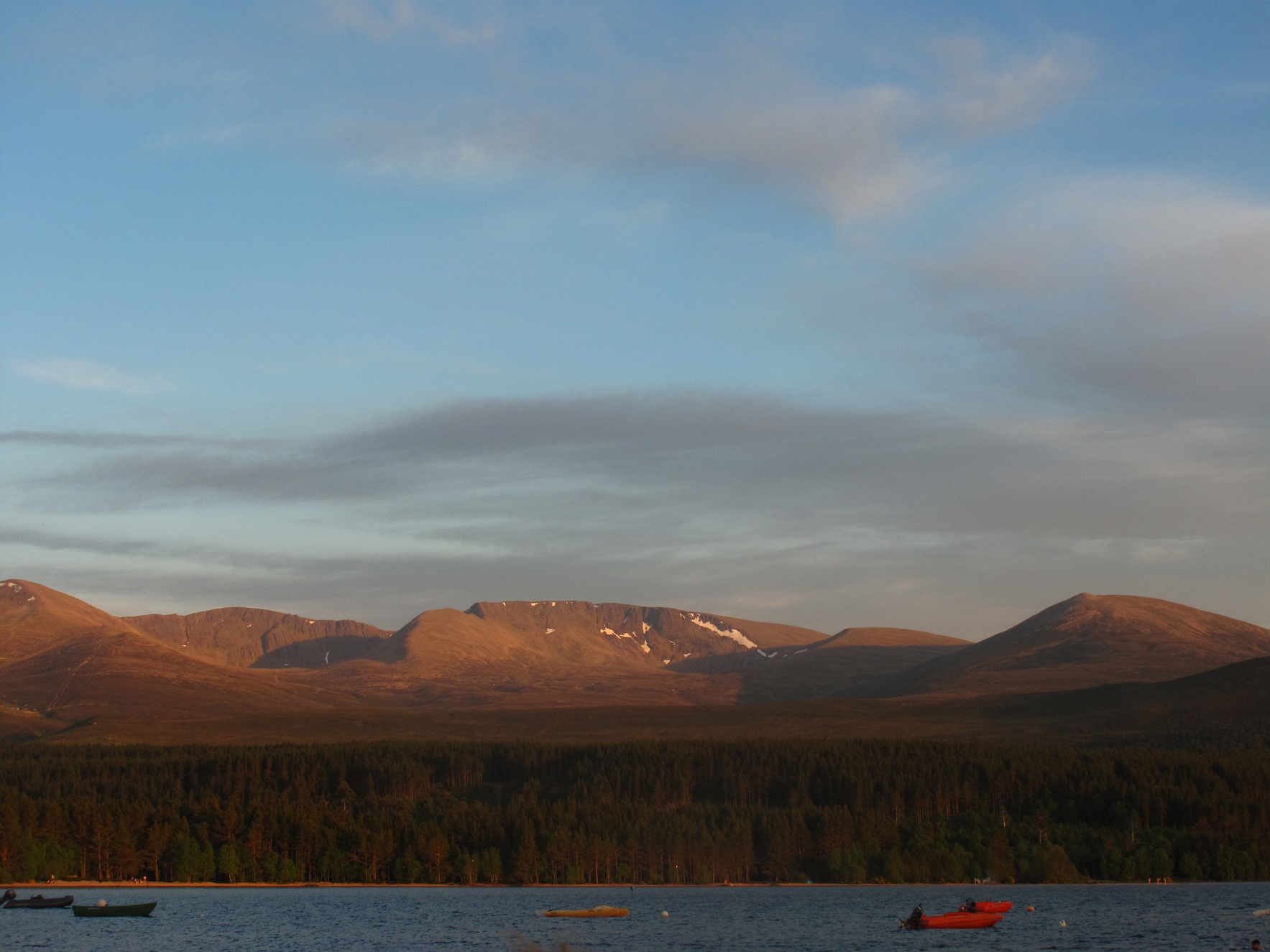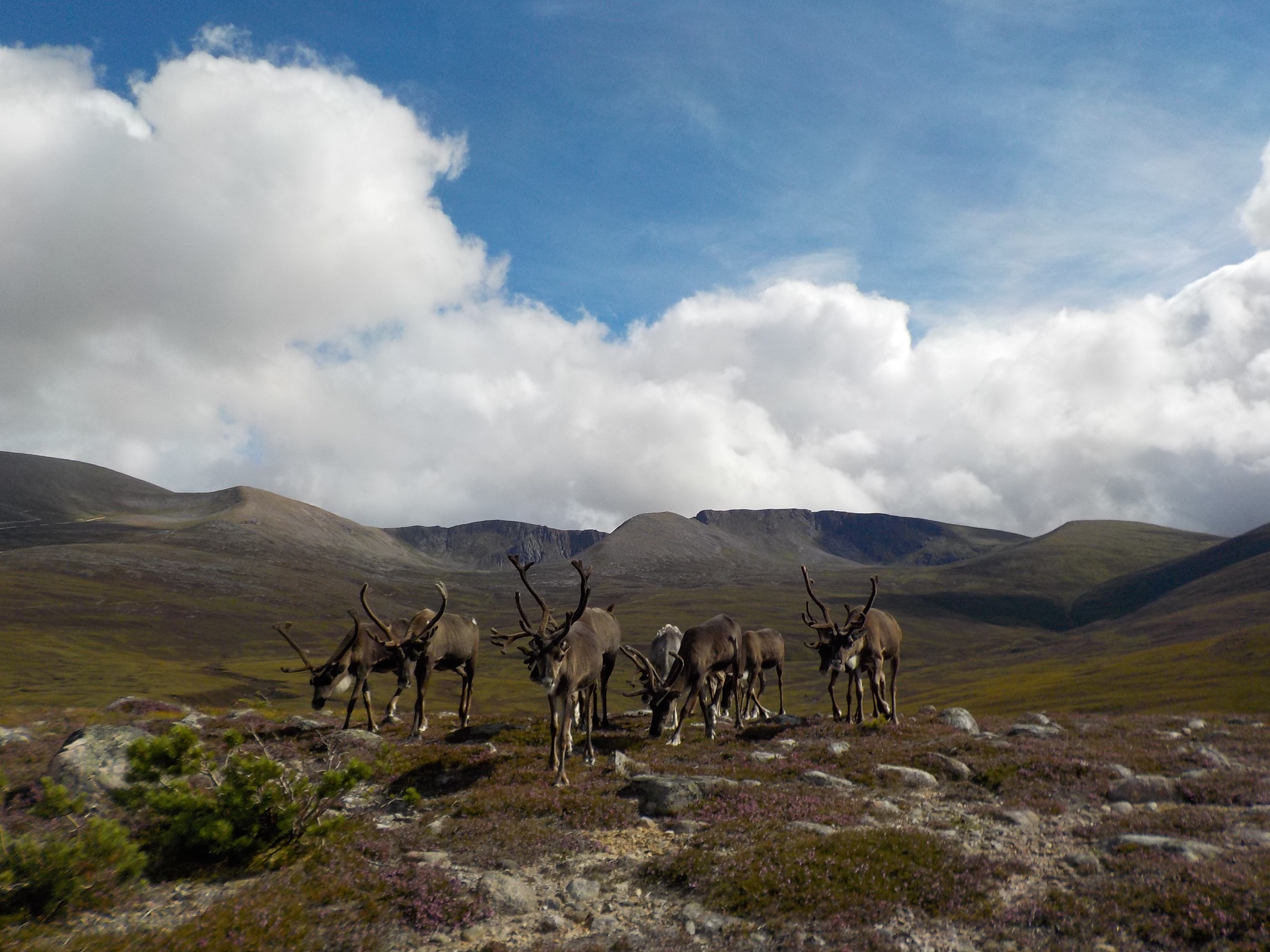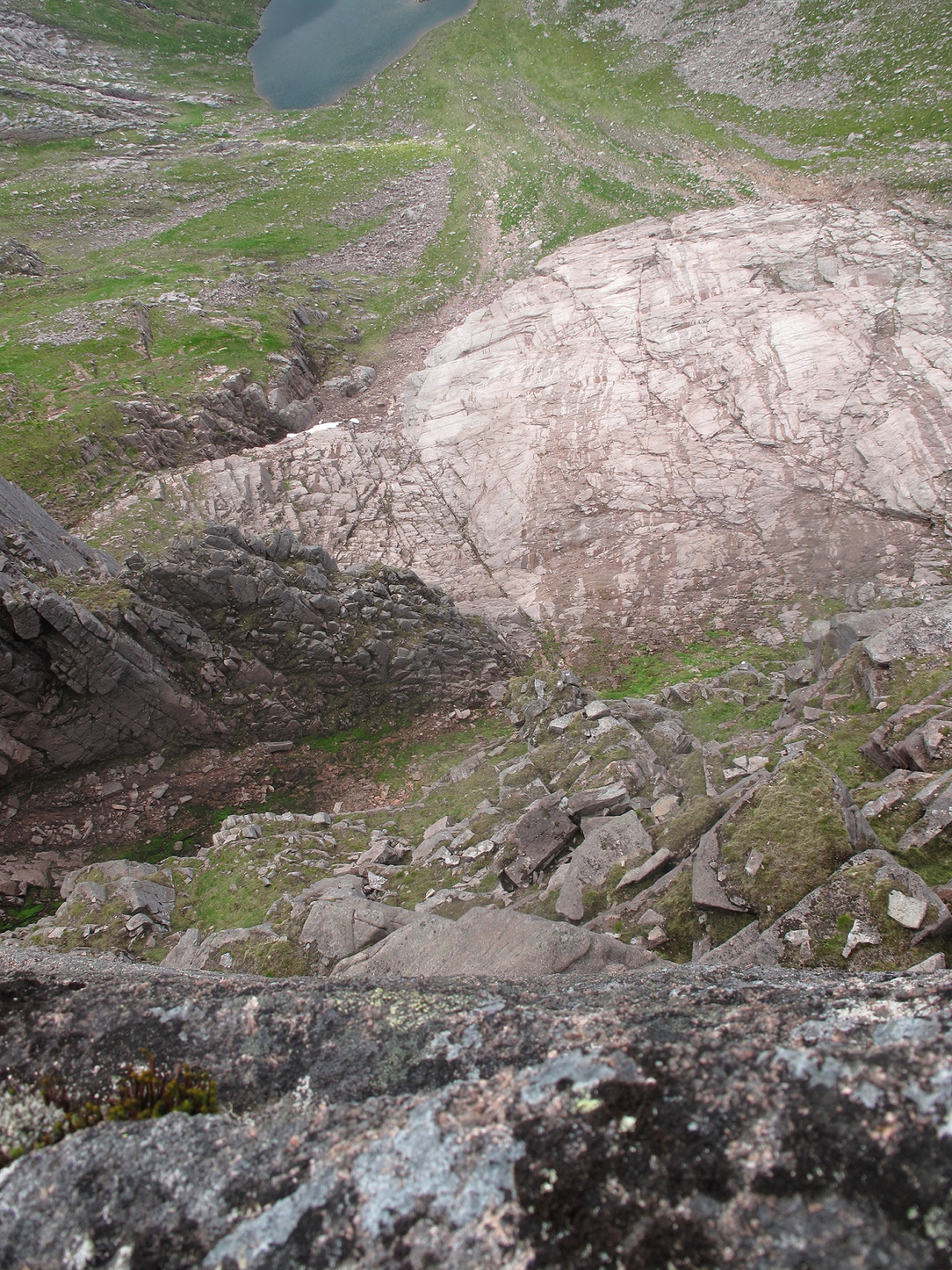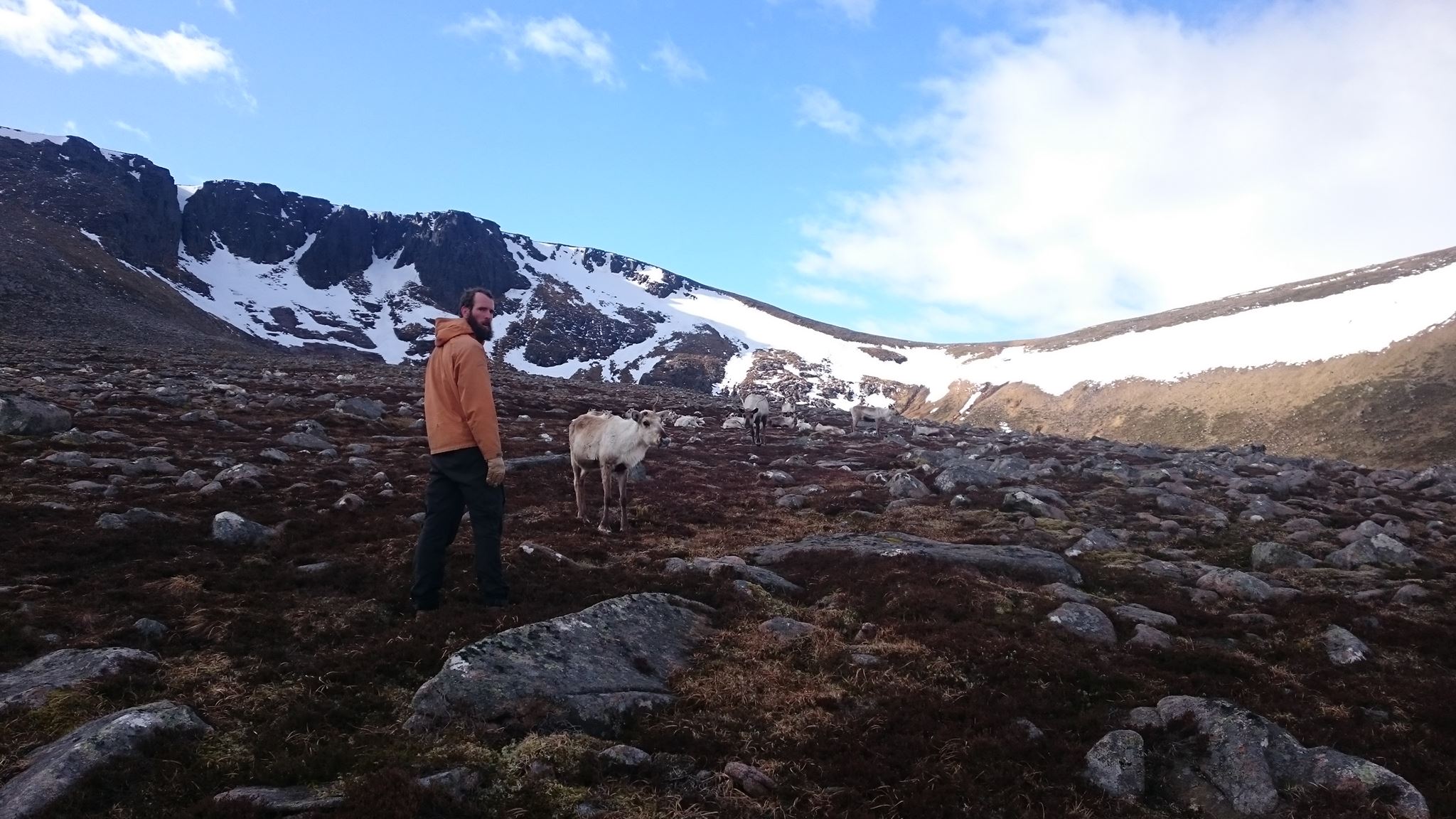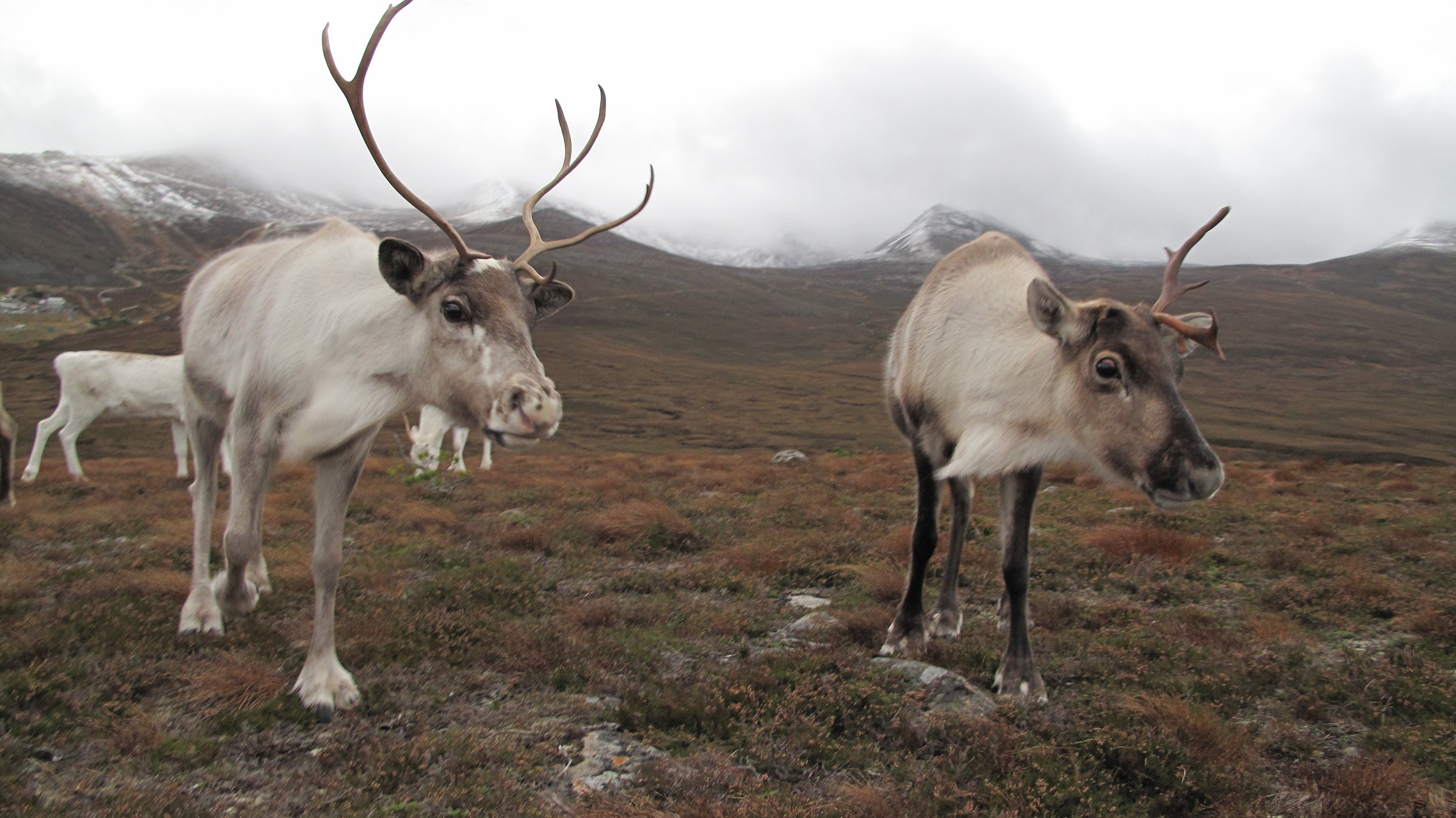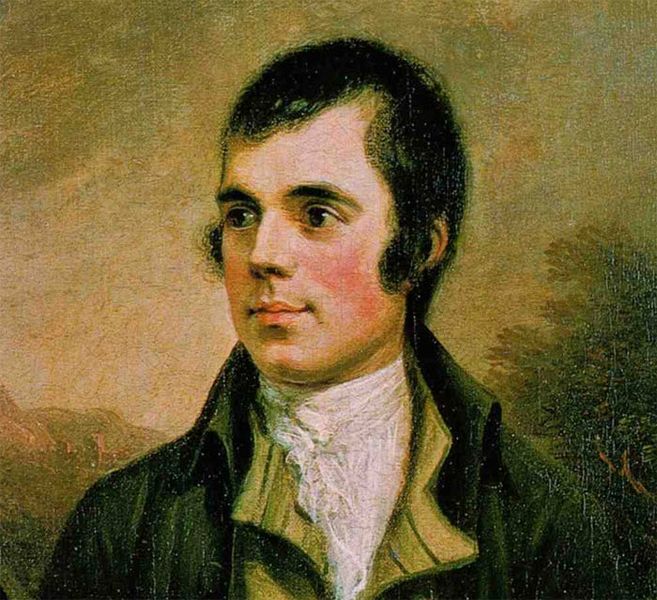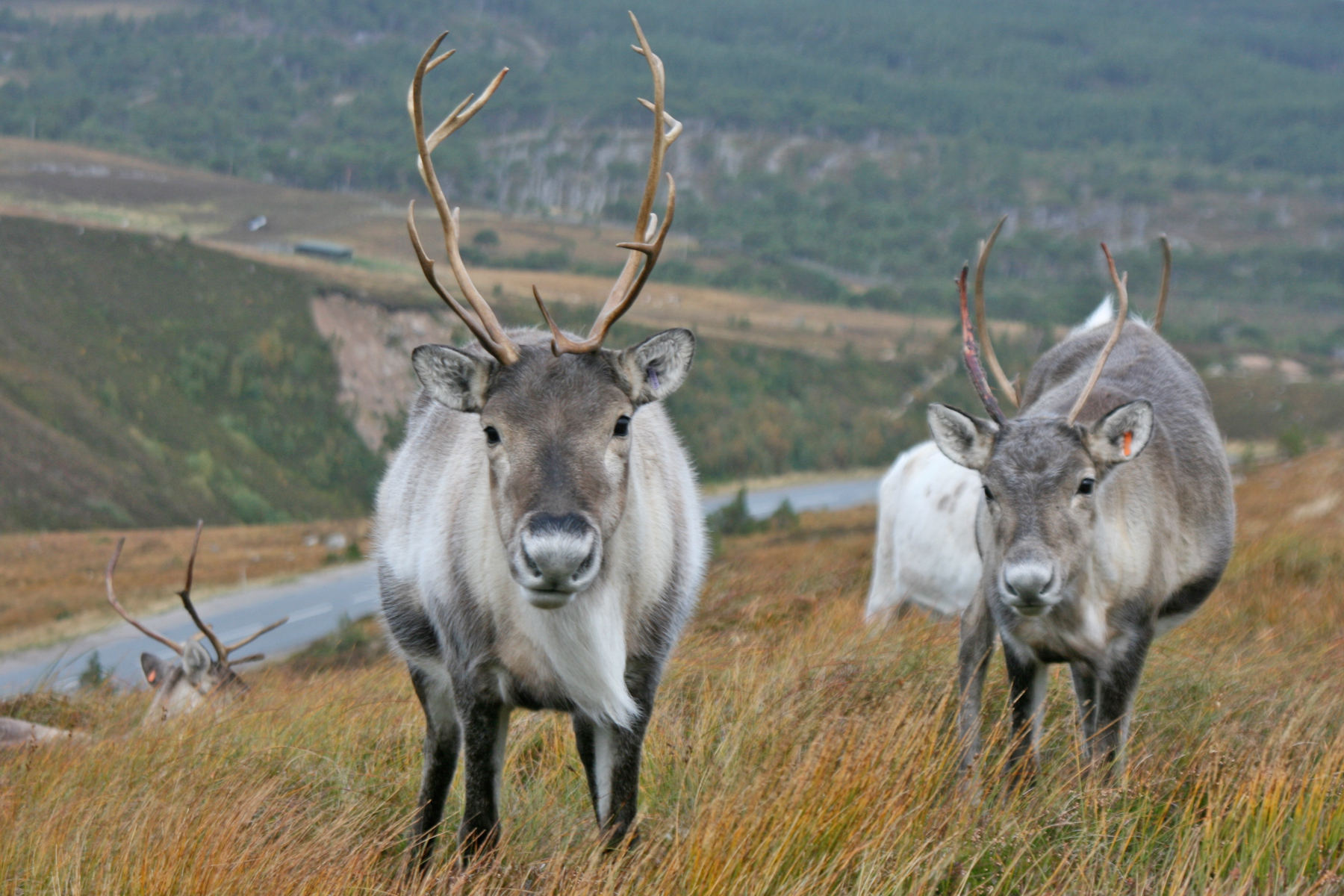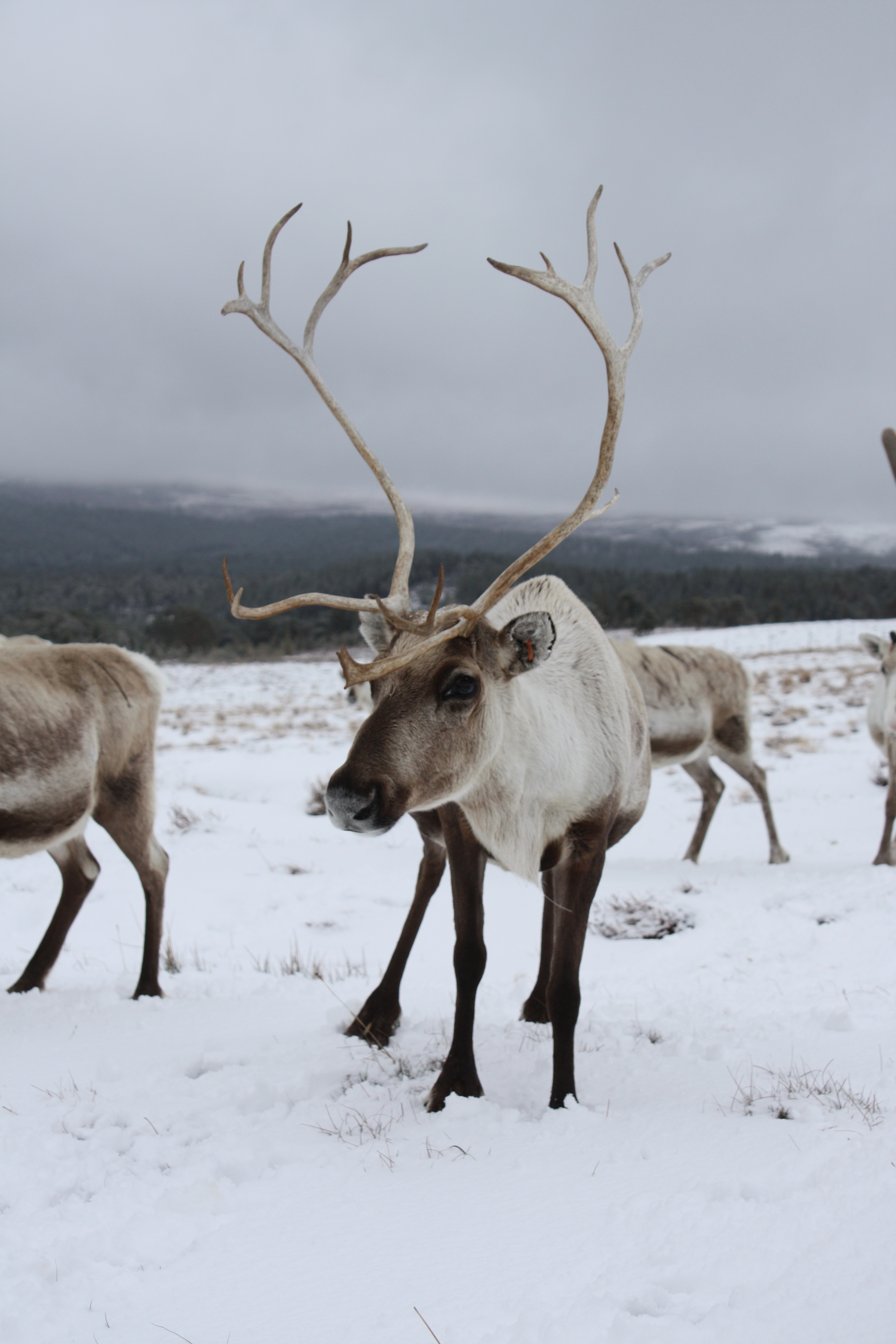I was over at the hill farm recently helping to feed our bulls and was pleased to see how good yearling Zoom was looking. And that reminded me that I’d promised Ruth I would write a blog telling the story of when we found him last year.
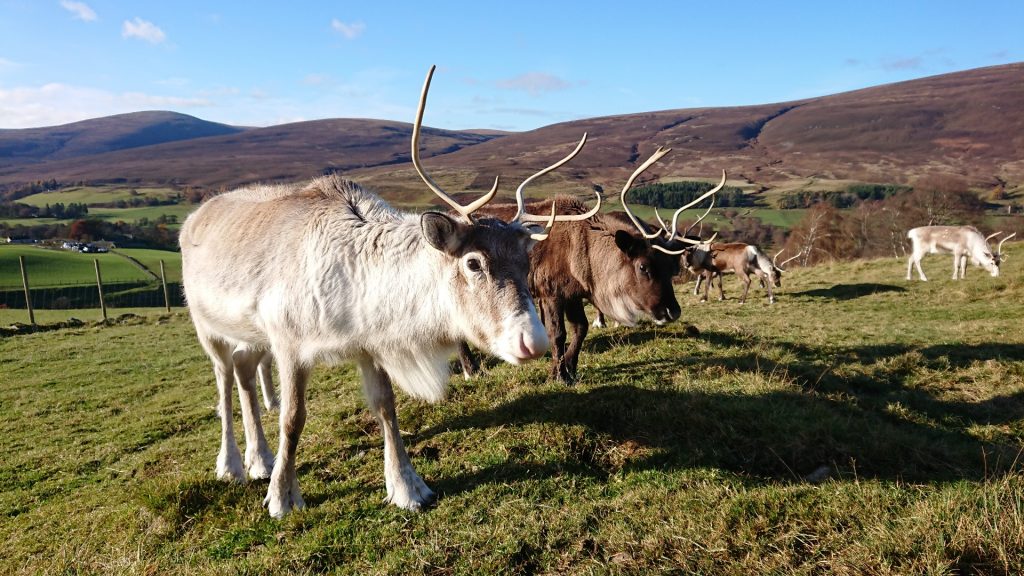
Zoom was born on the 8th May 2022 to mum Angua, one of the shier members of the herd. He had white face markings, like dad Spartan, and in fact was almost identical to full sister Chickpea. After a couple of weeks bonding with Angua in the enclosure, the pair of them headed to the high tops of the mountains for summer.
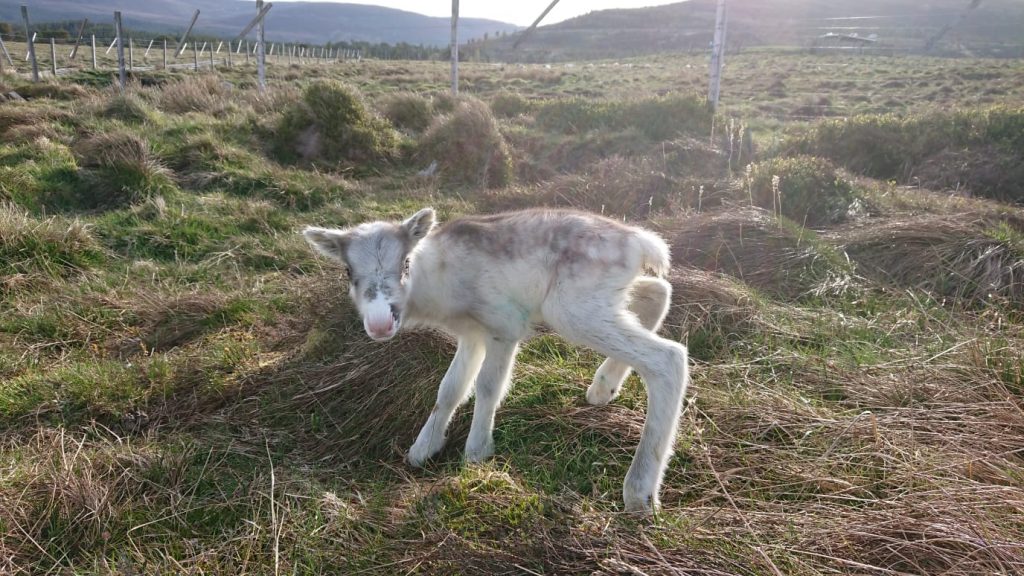
We get out as often as possible over the warmer months to check on the cows and calves, but inevitably the weather and other factors sometimes get in the way of this, and as the reindeer move around a lot too we can go for weeks or months without seeing a particular individual. I saw Angua and her calf high on the mountains in mid-July – both looking very scruffy as they were moulting out their winter coat, but otherwise looking grand.
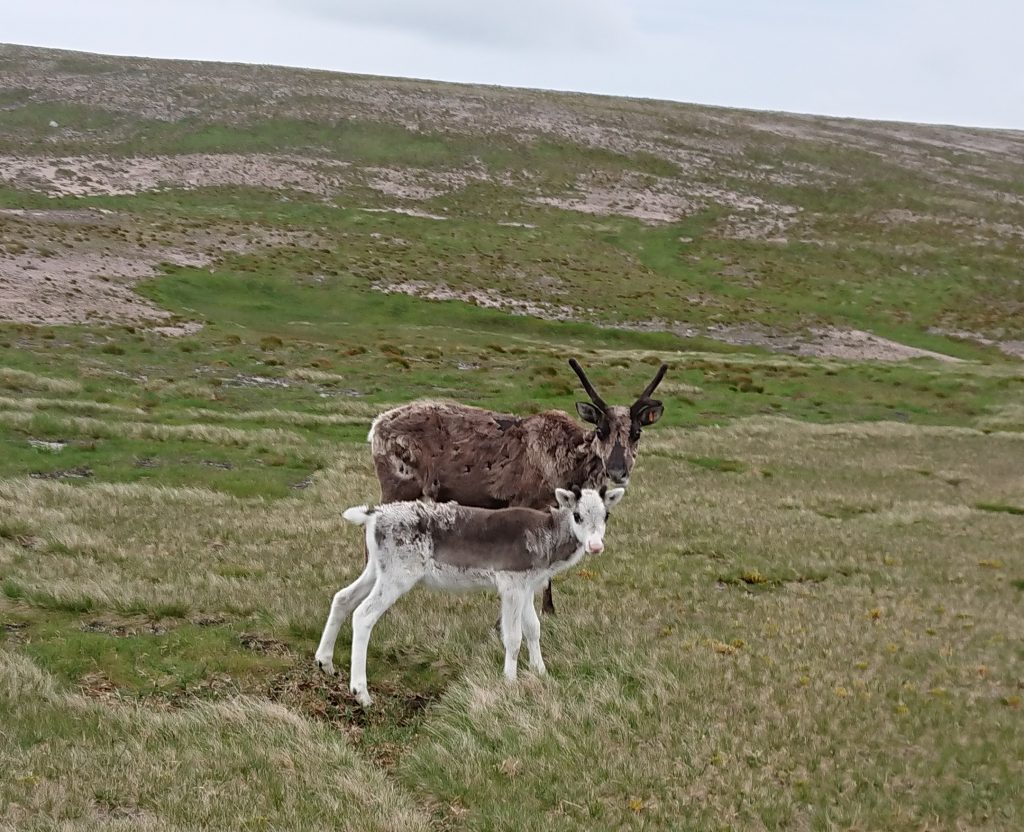
As the autumn came round, cows and calves started returning to the hill enclosure, and we went out to different areas too to fetch back some who had wandered too far. Whilst we don’t worry too much about not seeing a reindeer for a few months, by late September, the main stand out reindeer we hadn’t seen were Angua, her calf (now newly christened Zoom) and also her 2-year-old daughter Chickpea.
October rolled round and we were rushed off our feet preparing for the Adopter’s Weekend, celebrating our 70th anniversary. Typically, it was on the Friday, the day before the weekend, when we received a phone call from a hill walker, Richard, letting us know that his group had met a lone reindeer, and it had started following them. Reindeer are a herd animal so it is unusual to find one alone, and as we knew there were very few out on the mountains, Lotti and I scrambled to head out and try to catch them. We loaded up two of our steady Christmas reindeer, Olympic and Clouseau, from the Paddocks and drove the 35 minutes or so to the walkers’ car park nearest to Richard’s location. He called to update us that he had been up near the summit but had turned round to escort the reindeer back down to meet us – “Please hurry!”.

Olympic and Clouseau were delighted to be out on an adventure and we hurriedly popped their headcollars on, unloaded them and set off up the path through the forest. As we walked we debated which reindeer it could be. Richard hadn’t been able to spot an eartag, which suggested it may be a calf, but a calf was unlikely to have had enough exposure to humans to choose to follow one… We wondered how we would go about catching them too. The idea behind bringing along two tame lads was that even a shy reindeer was likely to want to come up and join other reindeer if alone, and this would hopefully give us a chance to get hold of them – sometimes this involves reaching beneath the tame reindeer’s belly to get hold of a leg, then holding on until your colleague can pop on a headcollar – not the way we’d prefer to do things but sometimes the only option. But if the lone reindeer was very wild it would be hard to get that close…
Much sooner than anticipated, we spied movement ahead, and all of our assumptions were blown out of the water. Not only was the lone reindeer in question indeed a calf, Richard was hurrying down the path literally with his arm over their neck, hand gently guiding on their shoulder. For a species that tends not to like contact, and for a calf that was basically unhandled, this was incredible! No need to worry about how we were going to catch them! We could immediately see from the white face markings and size that this was Angua’s calf, Zoom – rather scrawny and a little underweight, but otherwise looking healthy. It was a simple matter to pop a headcollar on Zoom (for the first time in his life) and after thanking Richard profusely, we headed our separate ways – us back down the track with our extra reindeer, and Richard back up the mountain.
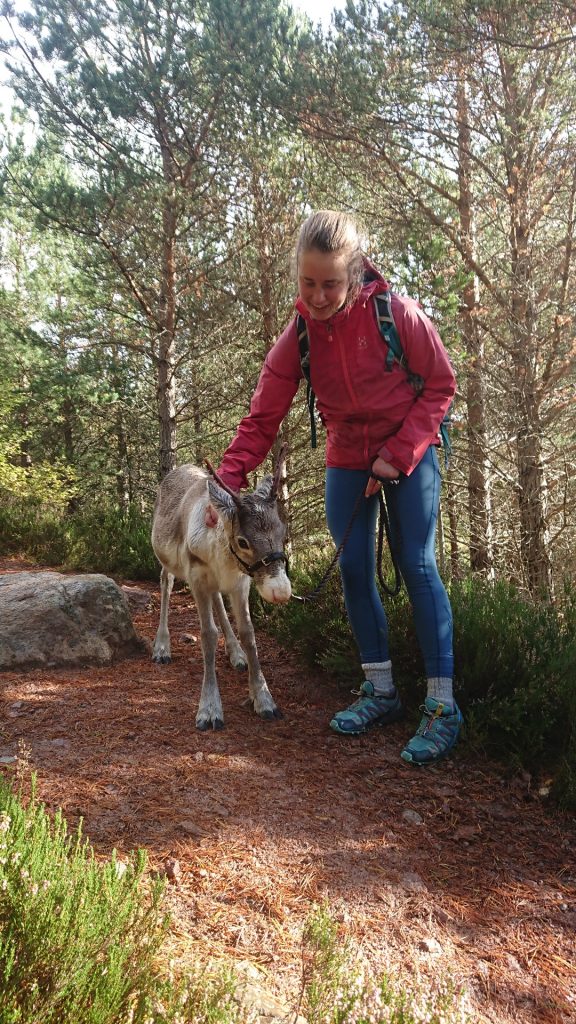
Reindeer usually protest a little the first time they are on a headcollar, but wee Zoom just seemed relieved to have found some friends, and Lotti & I had an easy walk back to the truck, still both astounded at the turn of circumstance. We arrived back at the Centre before the end of the day and Zoom quickly looked at home. Any adopters who visited us that weekend might have seen him, already friendly and confident. He buddied up with Sunny, who had been orphaned and hand-reared, and was often closely following Clouseau, latching onto him perhaps because he was the first reindeer he’d seen after being all alone. We joked about how Clouseau had got a calf of his own (despite being a castrate!).

Sadly we never saw Angua again, and the probable explanation is that she must have died at some point in the autumn, leaving poor Zoom to wander on his own. But animals are resourceful and he did exactly the right thing – putting his trust in the right kind human – thankfully Richard was good enough to get in touch with us and go out of his way to get Zoom down – we still talk of the special “Richard Ruffle” that he used to guide Zoom at his side.
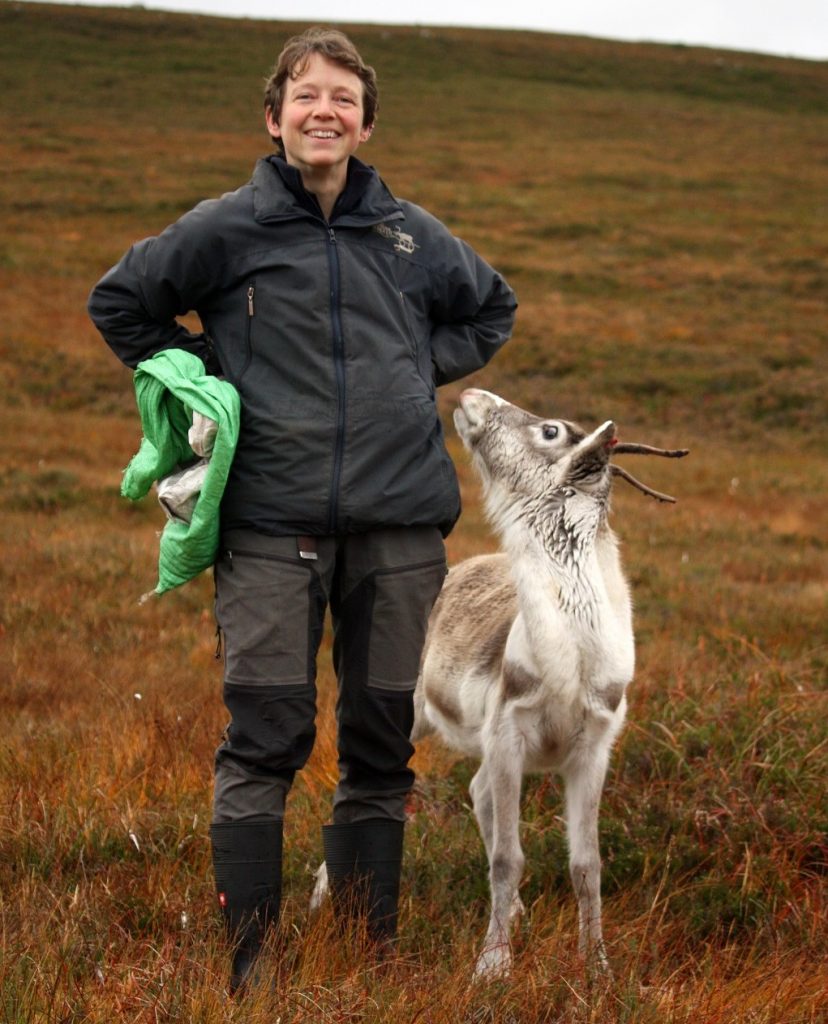
The other good news was that Zoom’s sister Chickpea made it home too, though it wasn’t for several months. There was the occasional report, and even a photo of her, at the far extent of the reindeer range, but every time we went out searching, there was no sign. Then in February, when we called in the free-ranging herd for breakfast, there she was – she’d found her own way back. She had clearly been unwell at some point – her coat was scruffy and she’d already cast her antlers – but she was otherwise her normal cheeky self.
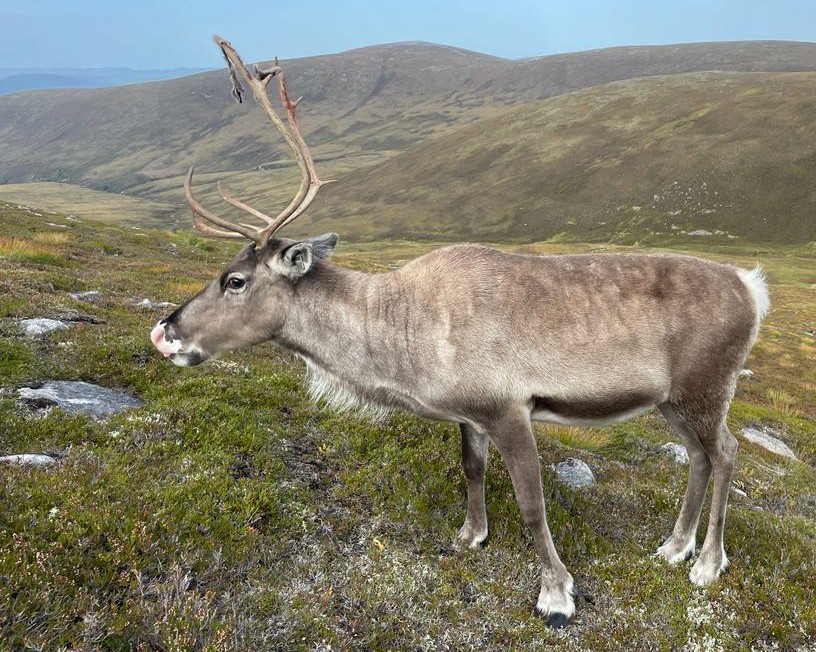
2023 has been a much better year for both of them, and Zoom and Chickpea are looking fantastic.
Andi

